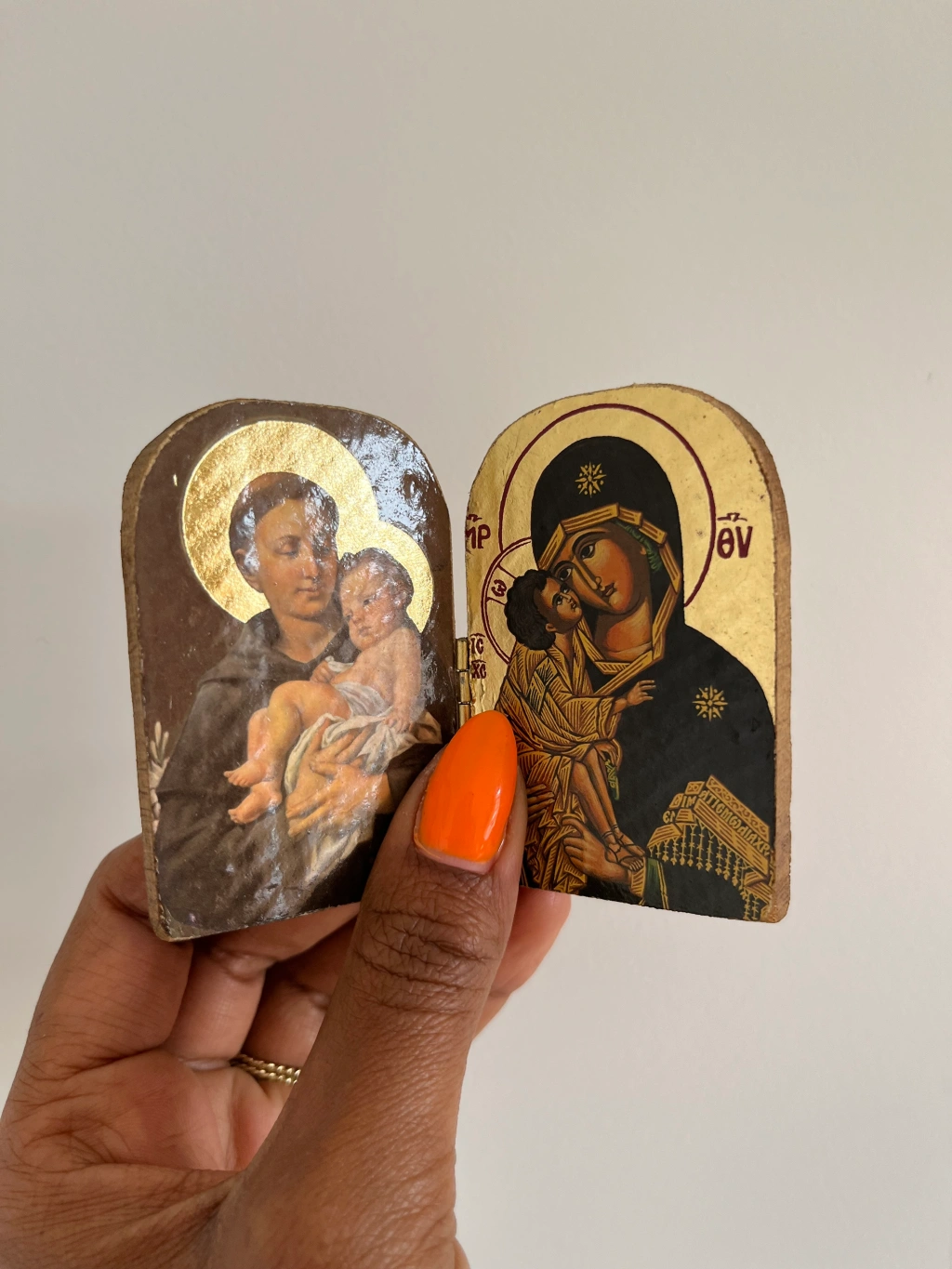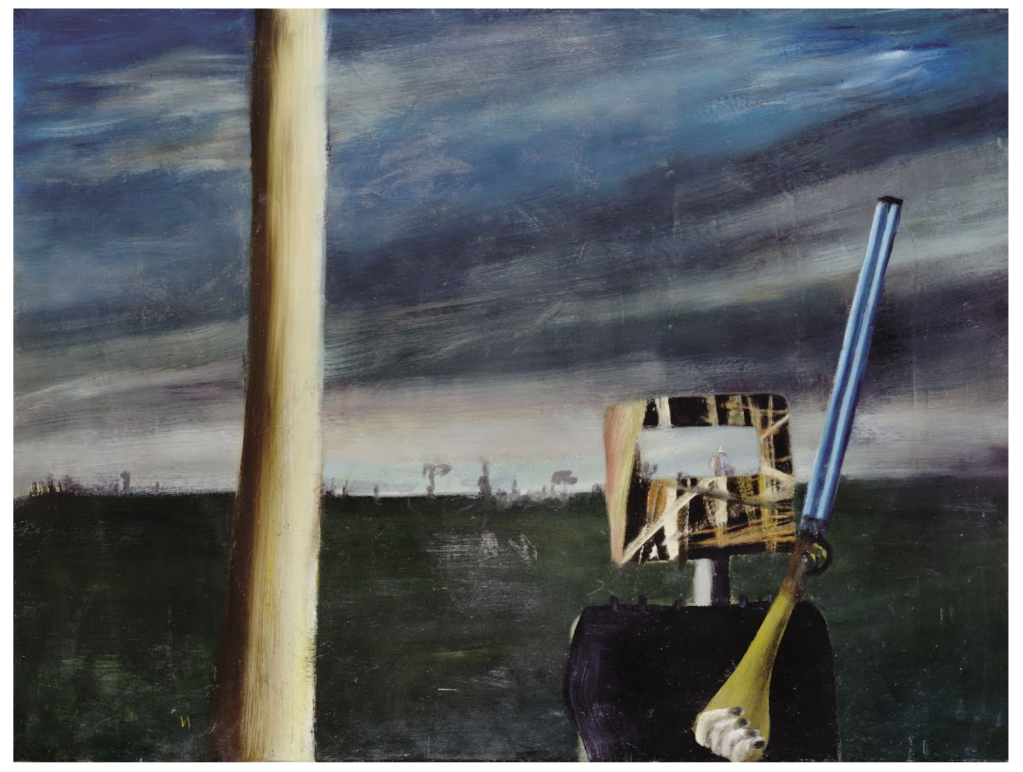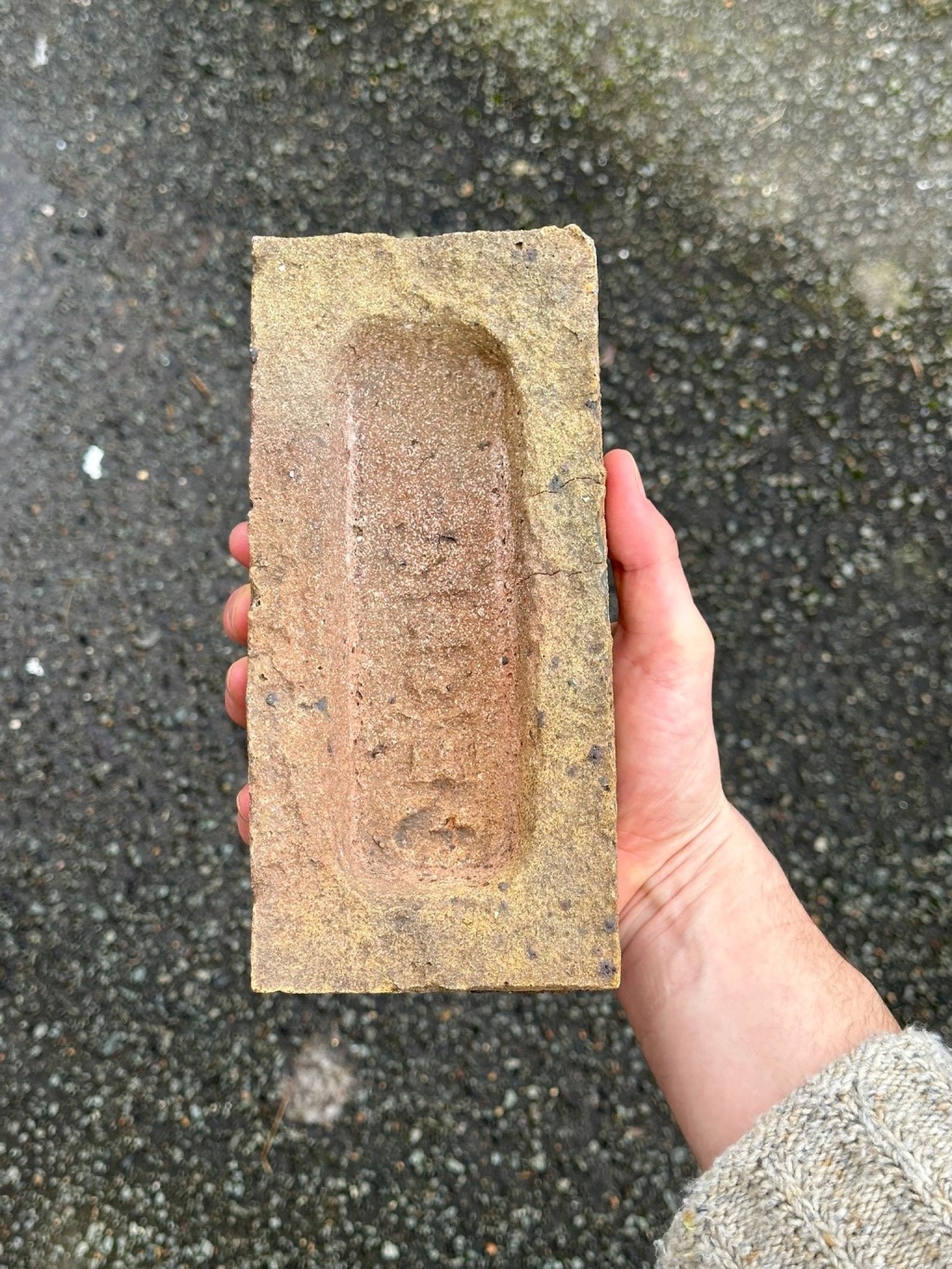
Richard Wentworth, artist, on his picture, “Manchester, June 2014”
GB Tell me why you chose this.
RW I think the picture is emblematic. That’s a nice word anyway. One forgets the word emblem. Now I shall look up its etymology. What that picture is about is a conversational space that’s shared by quite a considerable group of people I’m friendly with. We relate through pictures but not in an Instagrammy way – this is not even so much an image, it’s more of an anecdote. And in fact anecdotes are images if they’re any good. It’s almost like trading in cowry shells. A lot of people I’m friendly with are interested in this space, ultimately because its contingent and it’s the result of a performance. It’s obviously a small act, which has been performed and you see the evidence of it and the person who did it probably doesn’t realise that they’ve made an image.
Humans are reading the world constantly and part of surviving in it is to make sense of the world. Most of the time we’re scanning the world and we’re checking for conformity. We don’t even realize that we see conformity and that’s how we judge that something is coming to attack us, or a house is on fire or a car is about to crash into a child. That’s pretty much the kit that you get and it’s fundamentally notated in some experience: most people have burned themselves or cut themselves or learned from witnessing other people doing it. So this has something to do with our ability to play detective.
A photograph is already a terrible lie. The eye doesn’t make a 35 millimetre frame around things. It’s an eye. The world doesn’t have edges. So it’s already a pretend painting because it’s been chopped by the action of the camera. And it’s a modern camera so you can pretend to be near something you’re not. I even use my camera to read something I can’t read.
GB I used mine to look into a nest yesterday to see if the eggs had hatched.
RW Yes, that’s the modernity of it – that curiosity has joined up with the technologies of the time. Once upon a time it would have involved standing on the shoulders of the tallest boy in the class.
The particular quality of this picture is that I was being the child, being led by a knowing adult and I had surrendered my own sense of control. One of my ways of surrendering my control is to be a bit of an ambler. I enjoy the accident of turning left and not knowing where I’m going. I do that quite purposefully but on this occasion I was with someone who said he wanted to show me something, so we went down a side street and we were talking. Then he said, “Oh look at that.” It’s so fast, the chemistry of looking and sharing and exchanging. I don’t think he’d even quite realised what he’d pointed to. Most of looking involves not saying what something is, but what it isn’t. So you’ve probably already understood that it’s not a private house, you know more or less which part of the world you’re in, there’s a sense that it’s an institutional space, possibly a social space, maybe a student hall. So here there’s some invisible part of the sash, a weight or counter-weight, which obviously isn’t working. The point is that the act of seeing it is way ahead of comprehending what the concept or intention was. So now I’m looking at it I can see a really elaborate calibration here to do with the body and the height of chairs, the strength and portability of the chair. For all one knows it might have become standard practice in that building. I once knew a building in Brighton where they always kept the window open with a saucer. It was a canteen. The saucer would always be, as it were, ready to commit suicide. The weight of the window was the perfect reassurance to the saucer.
It’s important to me that it’s anonymous, but when you start thinking about it you have a powerful sense of the person’s own purposefulness when they did it. And the fact that it’s a leftover. Most of what we see is a leftover of other people’s actions. And I suppose with this building in the picture you can start to read the 1978 – 1985 architectural intentions and then you go “oops!” – it makes the place feel intimate. You feel strangely engaged in it once you’ve inhabited this leftover. I suppose I like the fact that this is how we survive, that it’s all desperately imperfect. We throw in a few more imperfections and two imperfections can make a perfect.
GB It’s quite a small world where you have this conversational space. Would you say that within that world you have your own unique definition of beauty?
RW It’s funny because the word ‘beautiful’ is so interesting anyway. It’s a word that’s attached to sexual desire and perceptions of other humans and even recognizing that things have been put into the world with a purpose, which one doesn’t quite like. How presumptuous of me to assume that I have to like something or not like something. The energy with which it was put into the world, the complexity with which it’s been achieved is beautiful. September 11th was beautiful. A lot of artists talked about it. The way that profoundly theatrical act happened was because it understood it own mediation, and was consequently very politically effective. We don’t often discuss the sublime. So it’s the way one uses the word. For me it’s often quite exclamatory: “God that’s beautiful!” I’m really interested in everything having its context and the ultimate context is the encounter with you, so you have to meet it in some way or it has to meet you. And that little epiphany even has some kind of orgasmic metaphor. It’s a moment of incredibly powerful experience.
But there’s another kind of beauty, which is something to do with a very long pretty-much fetishized value passed from one human to another – things that create wonder, particularly the unaccountable. And maybe that’s the point. What I’ve just said is like a detective trying to write a report about something which is actually unaccountable. Look at Stonehenge. How long have they been standing upright? Have they ever fallen over? Did somebody put them back up?
GB I think what’s unusual about you is that you find beauty in these found scenarios that have a certain level of meaning that you can’t quite figure out. You’re not really concerned with the truth. In fact you like the fact that you can’t quite get to it.
RW I think the fact that it runs away from you is very important. Ultimately, the world is not made of much. It’s made of minerals, chemicals, organic material – and humans give meaning to things. The cat doesn’t do that. The most interesting thing my cat does is to still go to a cat door that has been shut for a year. I understand quite a lot about psychology and the strangeness of bodily behaviour. It’s odd that I don’t know how my fingers know where the letters are on a typewriter and I don’t know how I drive. Driving is one of the best extensions of the body where you don’t really know what’s going on all the time but you certainly know if it’s going wrong.
GB Once you start noticing the endless variety of these strange scenarios, does that put you off going to a museum to look at a Michelangelo?
RW No! It’s not to the exclusion of that. I’m not the lord of misrule. I think it comes from a genuine pleasure in the haptic, some modest talent that used to be called “good-with-his-hands’, for reading the world. I know how thick the paving slabs are just by walking on them. I’m reading weight, thickness, dimension and the proposal of things all the time. I grew up in a household that was very judgmental and full of admonition and opprobrium. I now understand that the mean-spirited atmosphere of post-war Britain that I grew up in is a part of it.
GB What was the opprobrium aimed at?
RW There was a right way to do everything, there was a code. I’ve just been reading the book about the Profumo affair and the first chapter is absolutely brilliant on that. You really feel the sequences of values and codes -and that was my childhood. There was nothing very special about my childhood but there’s an element in it, which I have perhaps contorted and redirected. Maybe I am a non-conformist and I see the crack before I see the pane.
GB So if you already know that there’s a huge consensus of opinion about something being beautiful and acceptable, does that make you less interested in seeing it?
RW I’m wary. I think I’m quite wary of received codes. That’s exactly the point. I love being with somebody who really knows a subject and will drill right below it. I remember getting in on the edge of a guided tour in Venice and hearing somebody hold forth and they said that a huge amount of what we go to look at in Venice, was Venice reacting to the fact that America got discovered and that fucked up all the trade routes because, basically, Venice was over. So as America was starting to become the force of new energy, new materials and all the historic lines of trade to do with silks and spices and trade were being questioned, Venice started to get a bit hubristic and make bigger and bigger paintings and buildings. The thing about history is that we weren’t there so we’re always in danger of over-teaching it. No one ever told me as a child that the brick is an invention. Then somebody told me that the brick was the beginning of cheapness. That’s brilliant. It’s the beginning of standardising something and it’s not stone. It’s a wonderful invention but it isn’t masonry. It wants to be masonry. A brick is the size of a hand. If it’s bigger it doesn’t really work. And it’s really just a filler. It can’t even be a supportive structure. The brick is a gap-maker and the web of the mortar is the miraculous strength-giver.
GB What makes something worthy of the word Beauty to you?
RW I would say something like intake/out-take. It’s like breathing. Beauty can come to me through reverie, where I slowly realise (and I like the word realise because it means to make real) – so that’s what you might call a deductive process, like understanding the brick. That can have quite a long arc of recognition. But the one that is a little bit sexy, that makes you actually take in breath because you’re completely taken with something – that’s where some of the great standards come from, like the sunset. Sunset is somehow more beautiful than dawn. Is that because it’s death? A petit mort? I know a few places where people habitually go and watch the sun go down because the landscape works that way. I think anything that reminds you that you’re alive is beautiful. It’s pretty extraordinary to be alive and it only happens once. Human experiences aren’t that different. We prattle along, recognizing other humans. That’s why I’m so disappointed with the cat. Humans desperately want to communicate with people because they’re so lonely. It’s really very sad.




